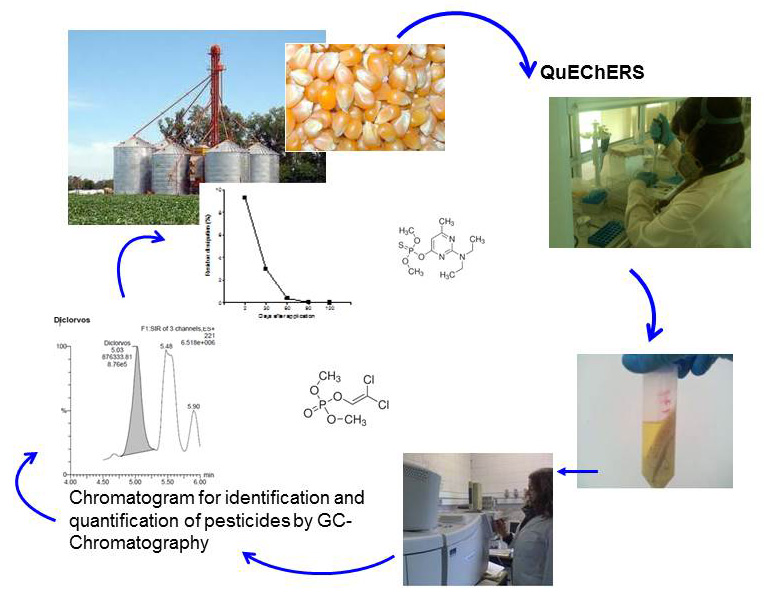Dissipation of the insecticides pirimiphos-methyl and dichlorvos in stored maize (Zea mays L.) grains
Palabras clave:
Curvas de disipación, Límite Máximo de Residuos, insecticidas organofosforados, pirimifós-metil, diclorvósResumen
1.jpg)
The aim of this work was to analyze the dissipation dynamics of the insecticides pirimiphos- methyl and dichlorvos in maize (Zea mays L.) grains after post-harvest spray applications. The recommendations for their use for Argentina and the Maximum Residue Limits (MRLs) established by local and international pesticide regulations were considered. Supervised experimental trials were conducted in stored maize grains treated with 10 cc.t-1 of pirimiphos-methyl and 20 cc.t-1 of dichlorvos. Samples were monitored 2, 30, 60, 90 and 120 days after application. The pesticides were extracted from the maize grains using the QuEChERS technique and the residues were determined using high-resolution gas chromatography with mass detector. Residue dissipation percentages and daily dissipation rates differed between active ingredients. At 48 hours after application, pirimiphos-methyl residues were 5.1±0.42 µg.g-1, i.e. below the MRLs established by the Argentine Service for Agrifood Health and Quality (10 µg.g-1), the USA (8 µg.g-1) and the Codex Alimentarius (7 µg.g-1), and close to the MRLs established by the EU (5 µg.g-1). Dichlorvos residues reached 2.97±0.27 µg.g-1, and required at least a 90-day withholding period to be lower than the MRLs of the EU.
Highligths
- Pirimiphos-methyl residues had high dissipation in stored maize grains.
- Dichlorvos insecticides in stored maize required more time withholding period than Pirimiphos-metyl to be lower than de MRLs of the EU.
- Organophosphorus insecticide residues were below the MRL of the Codex Alimentarius.
Descargas

Descargas
Publicado
Cómo citar
Número
Sección
Licencia
Aquellos autores/as que tengan publicaciones con esta revista, aceptan las Políticas Editoriales.










.jpg)




